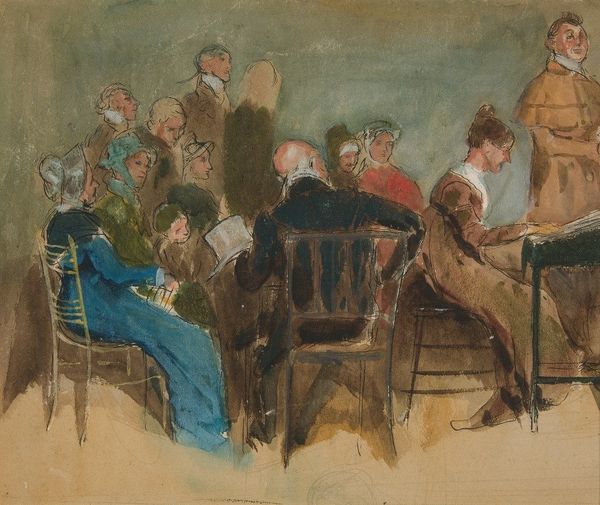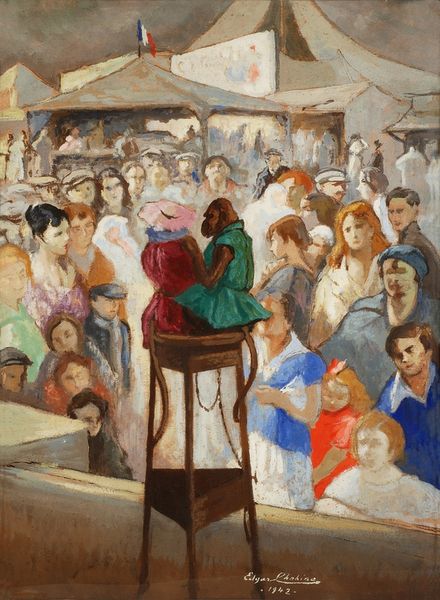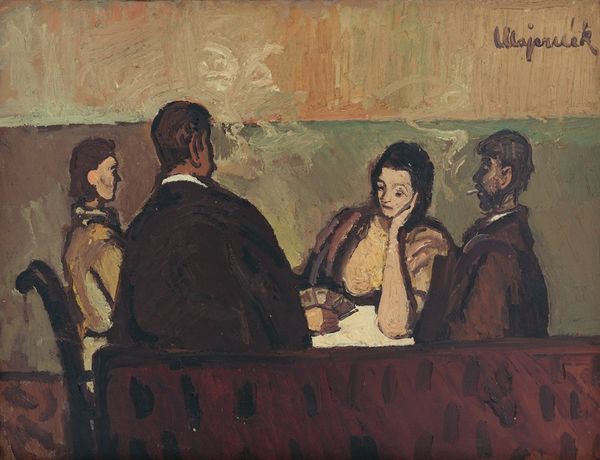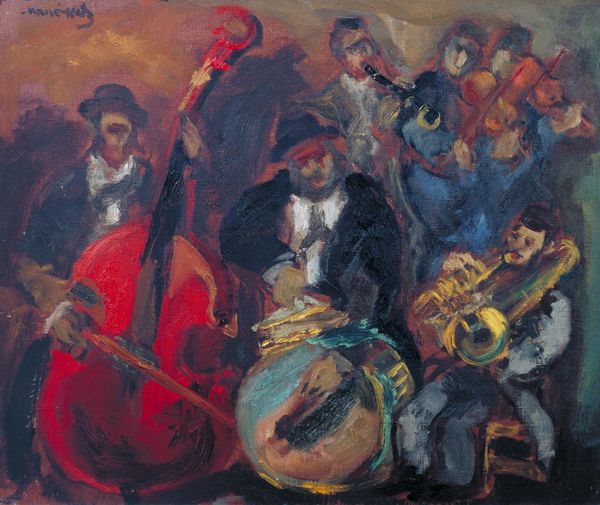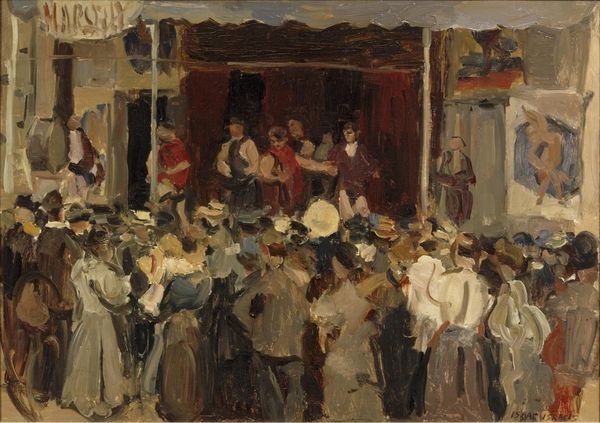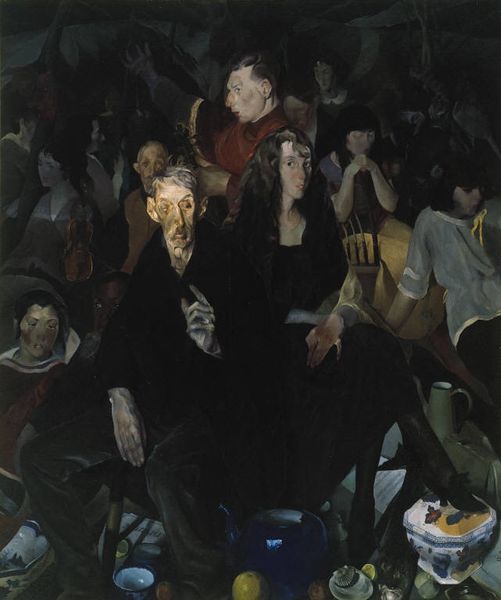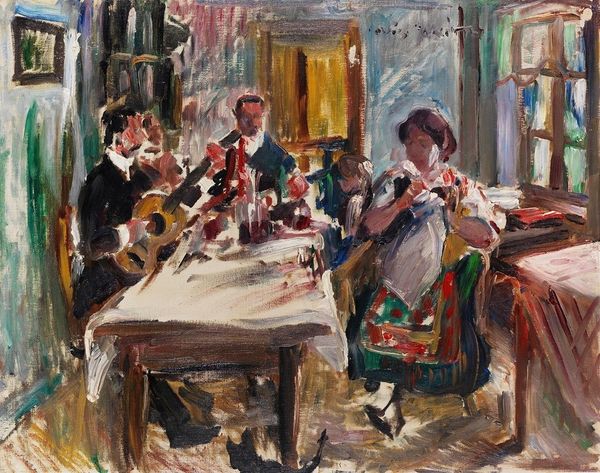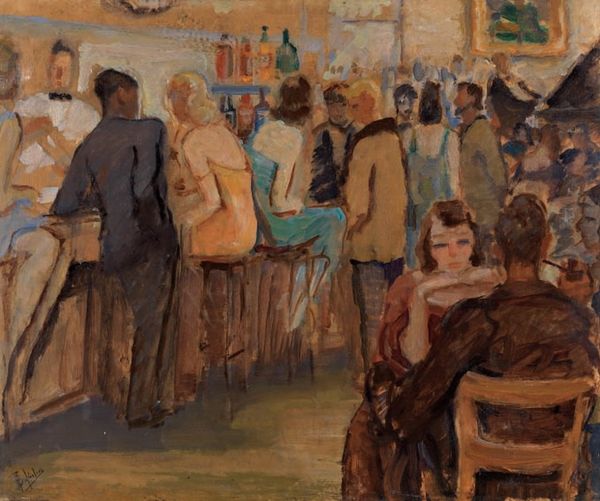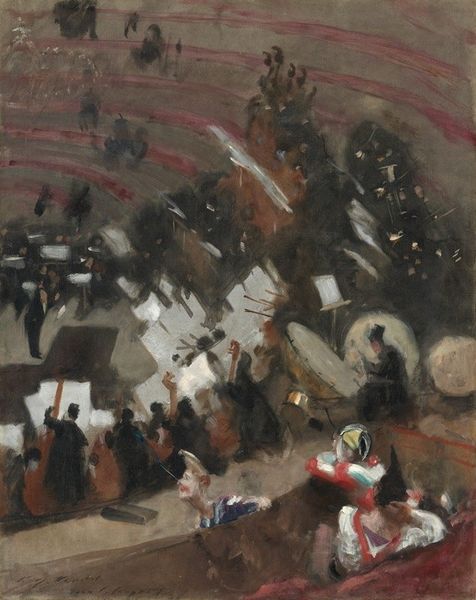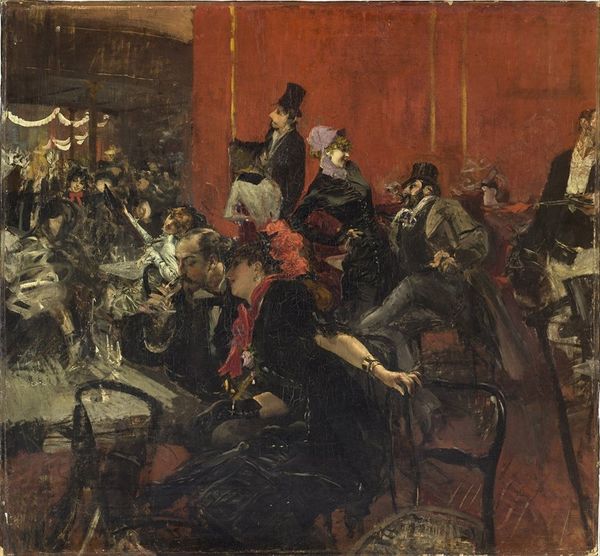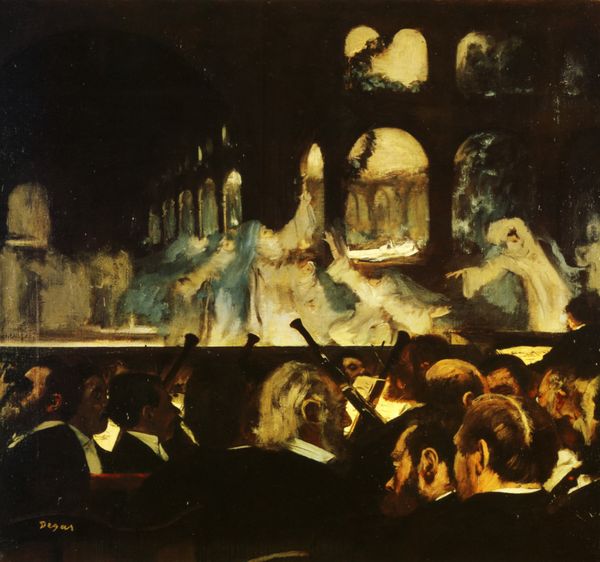
watercolor
#
portrait
#
oil painting
#
watercolor
#
group-portraits
#
genre-painting
#
modernism
#
watercolor
Copyright: Public Domain: Artvee
Editor: This is "The Concert" by Cyprián Majerník, created in 1943, using watercolor and oil. The atmosphere is somber; the color palette feels muted. What immediately strikes me is the division between the chorus and the instrumentalists. What do you see in this piece? Curator: Formally, the painting presents a distinct arrangement of planes. We see a clear demarcation between the standing chorus and the seated orchestra, established through tonal shifts and figure placement. The composition uses repetition, notably in the verticality of the music stands and the faces in the choir, creating a rhythmic effect. Editor: So the structure creates a sort of call and response, visually speaking? Curator: Precisely. The eye is drawn back and forth, activating the surface of the work. Consider, too, how Majerník utilizes watercolor to achieve varying degrees of opacity and translucency, allowing light to both penetrate and define forms. Observe the artist's handling of line and wash – the visible brushstrokes create texture, animating the surface. The modulation of tone brings a nuanced, tangible quality. Editor: That's fascinating, I hadn't considered how the use of watercolor directly impacts the textural feel of the painting. How does the apparent lack of detail impact the image? Curator: The seeming incompleteness is, formally, a characteristic that moves this composition into a different relationship with modernism, toward simplification. Editor: Thank you. It’s helpful to consider how artistic techniques and their materiality shape the overall impact. Curator: Indeed. By examining such elements, we understand the construction of meaning through purely visual means.
Comments
No comments
Be the first to comment and join the conversation on the ultimate creative platform.

